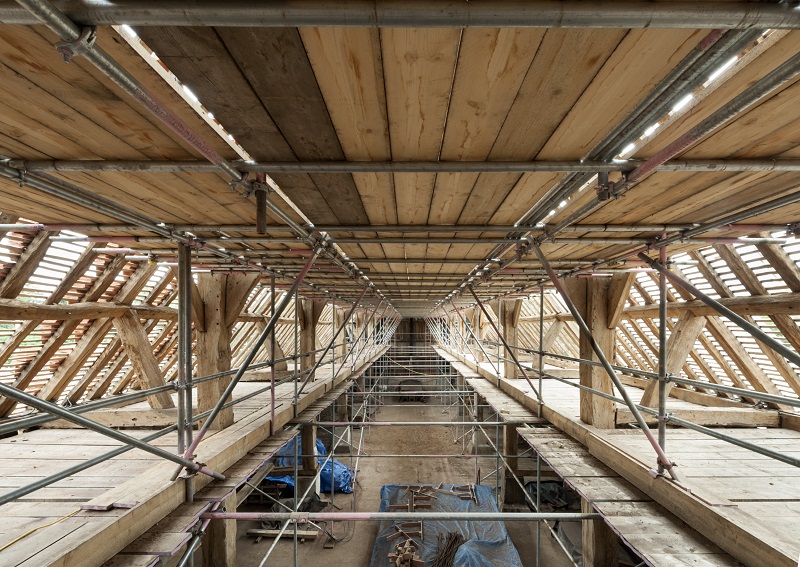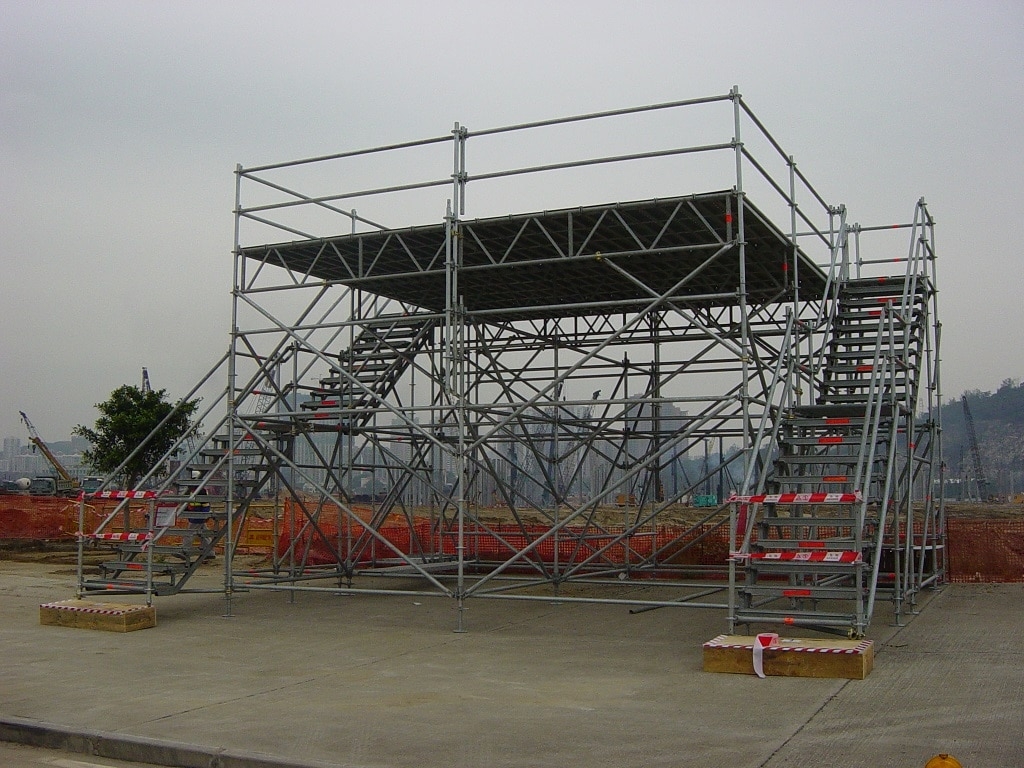Scaffolding Guildford: The Best Option for Your Building and Renovation Projects
Scaffolding Guildford: The Best Option for Your Building and Renovation Projects
Blog Article
Discovering the Different Kinds of Scaffolding Utilized in Building And Construction Jobs
The building and construction sector relies greatly on various sorts of scaffolding to meet particular task needs, each offering unique advantages and applications. Typical framework scaffolding provides a sturdy foundation for basic jobs, while suspended scaffolding is important for job on high-rise frameworks. Various other options, such as system and rolling scaffolding, deal with effectiveness and mobility, respectively. The cantilever alternative verifies important in urban environments where room is constricted. Understanding the subtleties of these scaffolding kinds is crucial for enhancing safety and security and efficiency on construction websites, prompting a better exam of their unique attributes and applications.

Typical Framework Scaffolding
Standard framework scaffolding is just one of one of the most widely used techniques in the building market as a result of its effectiveness and flexibility. This system is composed of upright and straight frames that are assembled to create a secure system for materials and employees. The major parts include vertical posts, straight journals, and diagonal braces, which with each other supply a solid structure that can sustain substantial tons.
Among the essential benefits of standard structure scaffolding is its flexibility to numerous construction jobs, ranging from household structures to huge business frameworks. The modular design enables for easy setting up and disassembly, making it reliable for both long-term and temporary tasks. Furthermore, the system can be tailored in height and width, accommodating different structure layouts and site problems.
Safety and security is critical in scaffolding applications, and typical frame systems are furnished with guardrails and toe boards to avoid drops and make sure employee security. Normal examinations and adherence to safety policies are vital in preserving the stability of the scaffold (Scaffolding). On the whole, traditional frame scaffolding remains an essential option in the building market, supplying a reliable platform for labor and boosting general job performance

Suspended Scaffolding
Suspended scaffolding provides a distinct solution for building and construction jobs that need accessibility to raised surfaces, specifically in circumstances where conventional structure scaffolding might be impractical. This kind of scaffolding is commonly suspended from the roof or top levels of a framework, using a system of ropes, platforms, and pulleys to create a functioning space that can be gotten used to different elevations.
One of the key advantages of put on hold scaffolding is its flexibility. It can be conveniently repositioned or reduced to accommodate modifications in construction requirements, making it perfect for jobs such as window setup, façade work, and upkeep on high-rise buildings. In addition, the minimal footprint of put on hold scaffolding allows for much better use ground space in city environments, where area is commonly limited.
Security is an important consideration in the use of put on hold scaffolding. Proper rigging and anchoring systems should be utilized to make check certain stability and stop crashes. Operators should likewise be educated in the secure use of this devices. On the whole, put on hold scaffolding provides a effective and efficient solution for accessing hard-to-reach areas in different building and construction circumstances, enhancing both productivity and security on site.
System Scaffolding
System scaffolding, usually regarded as a modern solution in the scaffolding sector, contains pre-engineered elements that can be swiftly set up and adapted for various construction tasks. Scaffolding. This kind of scaffolding is identified by its modular style, which enables convenience and performance on work websites, fitting different heights and architectural demands
Usually made from high-strength steel or aluminum, system scaffolding offers improved durability and security. The elements include vertical articles, straight journals, and diagonal braces, which adjoin securely, guaranteeing a robust framework. The design often integrates standardized fittings, simplifying assembly and disassembly processes, therefore minimizing labor time and costs.

Rolling Scaffolding
Rolling scaffolding is a flexible alternative to traditional fixed scaffolding, developed for mobility and simplicity of use on construction websites. This sort of scaffolding is composed of a system supported by frames with wheels, allowing workers to conveniently move it as required. The flexibility attribute considerably enhances efficiency, as it minimizes downtime connected with taking apart and setting up repaired scaffolding.
Commonly created from light-weight products such as light weight aluminum or steel, rolling scaffolding provides a durable yet mobile remedy for tasks needing frequent repositioning - Scaffolding. It is specifically helpful in tasks such as painting, drywall installation, and electric work, where access to various heights and areas is required
Safety is vital in rolling scaffolding design, with features such as locking wheels to prevent unplanned motion when being used, and guardrails to protect employees from falls. In addition, lots of designs are adjustable in elevation, fitting numerous task requirements.
Cantilever Scaffolding

The layout of cantilever scaffolding commonly entails making use of braces or arms anchored to a structure or framework, allowing the platform to expand exterior securely. Security is vital; therefore, these scaffolds should be engineered to hold up against numerous lots and ecological conditions. Normal assessment and maintenance are essential to make certain architectural stability and worker safety and security.
Cantilever scaffolding is favored for its versatility and reliable use space, making it a preferred option in urban settings where area restraints are typical. Furthermore, it helps with much easier accessibility to high altitudes, ultimately contributing to the overall effectiveness of construction tasks. As with all scaffolding kinds, appropriate training and adherence to safety criteria are important for workers using cantilever scaffolding.
Conclusion
Standard framework scaffolding offers security, while suspended scaffolding provides adaptability for elevated tasks. System scaffolding assists in quick assembly, and rolling scaffolding boosts flexibility for varying job atmospheres.
Traditional frame scaffolding supplies a sturdy foundation for basic jobs, while suspended scaffolding is crucial for job on skyscraper frameworks.Rolling scaffolding is a functional alternative to standard fixed scaffolding, designed for mobility and convenience of usage on building and construction websites. As with all scaffolding types, correct training and adherence to safety requirements are vital for employees making use of cantilever scaffolding.
Typical frame scaffolding supplies stability, while suspended scaffolding offers versatility for elevated tasks. System scaffolding helps with fast assembly, and rolling scaffolding boosts mobility for differing work environments.
Report this page